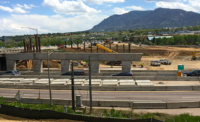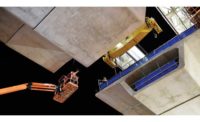“On the one side, governments understand the importance of rail. But they also know that the bill is heavy, so more public-private partnerships are emerging,” says Jean-Pierre Loubinoux, director-general with the Paris-based International Union of Railways, a consortium of rail industry agencies and companies. “It’s not a new tool, but the difficulty is that it can be 10 years between idea and integration.” He notes that there are two P3 deals in the works for two high-speed-rail lines in France.
Private money is not scarce in the United Arab Emirates, and the sheiks there are investing heavily in all kinds of rail. Parsons Corp. and AECOM recently won a project management contract for the first phase of an $11-billion job in Abu Dhabi. The impetus is largely the region’s desire to evolve from a gas- and oil-fueled economy and to embrace sustainability.
Sports Spark Rail Work
In at least two regions, the anticipation of major global sporting events is spurring rail construction. Qatar, which anticipates hosting the World Cup in 2022, has 18 major rail programs, notes Keith Dunbar, Parsons senior vice president. “They are planning all sorts of rail—bus rapid transit, light rail, commuter rail. From the rail point of view, it’s a dream country.”
In addition to a $3.2-billion, 1,728-km freight line, Brazil plans a $9-billion high-speed-rail line between Rio de Janeiro and Sao Paolo in anticipation of the 2014 FIFA World Cup. “We’re also seeing heavy rail activities due to the mines in Chile and Argentina,” says Bill Mooney, vice president for rail with Halcrow.
But rail projects aren’t dead in developed countries. For example, Halcrow is part of the project team on London’s Crossrail, a $24-billion, 118-km new commuter-rail line being built partly in anticipation of the 2012 Olympics. “Clearly, what’s going on in the U.K. is a continuation of what’s been built,” says Mooney.
Major engineering firms aren’t pursing rail everywhere due to ethical and safety considerations. In the U.S., the question of building up a national network of rail is complicated not only by funding and politics but by the 50-state structure, notes PB’s Pierson. “A lot of agencies are structured for operations, not necessarily for capital development,” he notes.
Nevertheless, as for other infrastructure markets, the American market for rail remains desirable. “We would like to learn how to get started in the U.S. market, which we believe is the most stable market, even with the economic recession,” says China Railway Group’s Liu.





